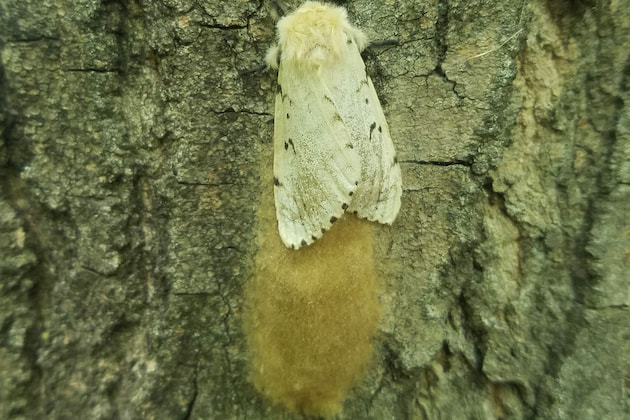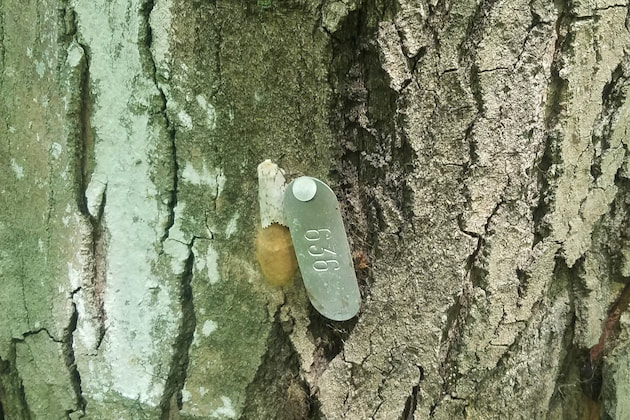Sugarbush Management
Producers are urged to check for Gypsy moth eggs this summer
Start contacting spraying companies in January, if necessary
By PETER GREGG | JULY 16, 2021
ALBANY, N.Y.—This summer look for egg masses.
Officials are encouraging sugarmakers to check trees and outbuildings for egg masses of the Gypsy moth, which had huge outbreaks throughout the Maple Belt this spring, chewing up trees.
The egg masses are found usually on the trunk of the tree and underside of larger branches, according to Adam Wild of the Cornell Maple Program in Lake Placid, N.Y.
"They can be close to the ground or all the way up the trunk," Wild said.
Some producers are seeing egg masses on mainline tubing.
The egg masses are larger and can typically be seen from the ground. Binoculars can also help.
"A sugarmaker should not wait till the egg masses start hatching in the spring to become concerned," Wild said.
Meanwhile, maple producers are also urged to quickly start lining up resources—specifically contracting with spraying companies— for the war against Gypsy moths that might very well last another year or two.
Sprayers need a lot of lead time, so sugarmakers should start hiring in the winter for spring spraying campaigns.
Aerial spraying of a biological insecticide called Bt (bacillus thuringiensis) is the most effective treatment, but it must be done in when tiny caterpillars first emerge and begin feeding on leaves. This typically occurs from April to early May, but varies depending on the location.
"A lot of the big sugarbushes are planning on treatments for next year because they are being heavily impacted," said Robert Cole, a state of New York conservation forester.
At Parker Family Maple in West Chazy, N.Y. the farm spent $47,000 in May to hire crop dusters to spray their massive sugarbush with BT, which they say was effective in killing caterpillars that otherwise chewed up neighboring sugarbushes.
"At the first sign of any feeding, that's when spraying really needs to happen," Cole said.
Caterpillars typically feed through June, causing widespread defoliation of trees where infestations are heaviest, and then lay eggs in July and August.
Heavy outbreaks of the insect's caterpillars were reported this spring across New York from the Finger Lakes to Clinton County in the northeast corner of the state where significant sugarbush damage has occurred.
Outbreaks are also occuring in Northern Vermont in the Champlain Valley and in parts of New Hampshire.
The DEC does not have an eradication program, so land owners are encouraged to contract with private firms that do such work.
Cole encouraged sugarmakers to contact a spraying firm early next year, in January, to get on their list and give the company time to order the product it needs. This is especially true if other property owners in a specific area are planning to treat their woods, too.
BT does not harm beneficial insects such as honey bees, Cole said.
Outbreaks typically occur every 10 to 15 years and last from two to three years until one of two natural enemies, a virus or fungus, runs through the population and kills it off.
The current outbreak started last year in the Finger Lakes, but is new to the Adirondacks and northern New York this year.
Cole encouraged residents to report outbreaks including location and type of tree caterpillars are feeding on by emailing DEC at: foresthealth@dec.ny.gov.
































